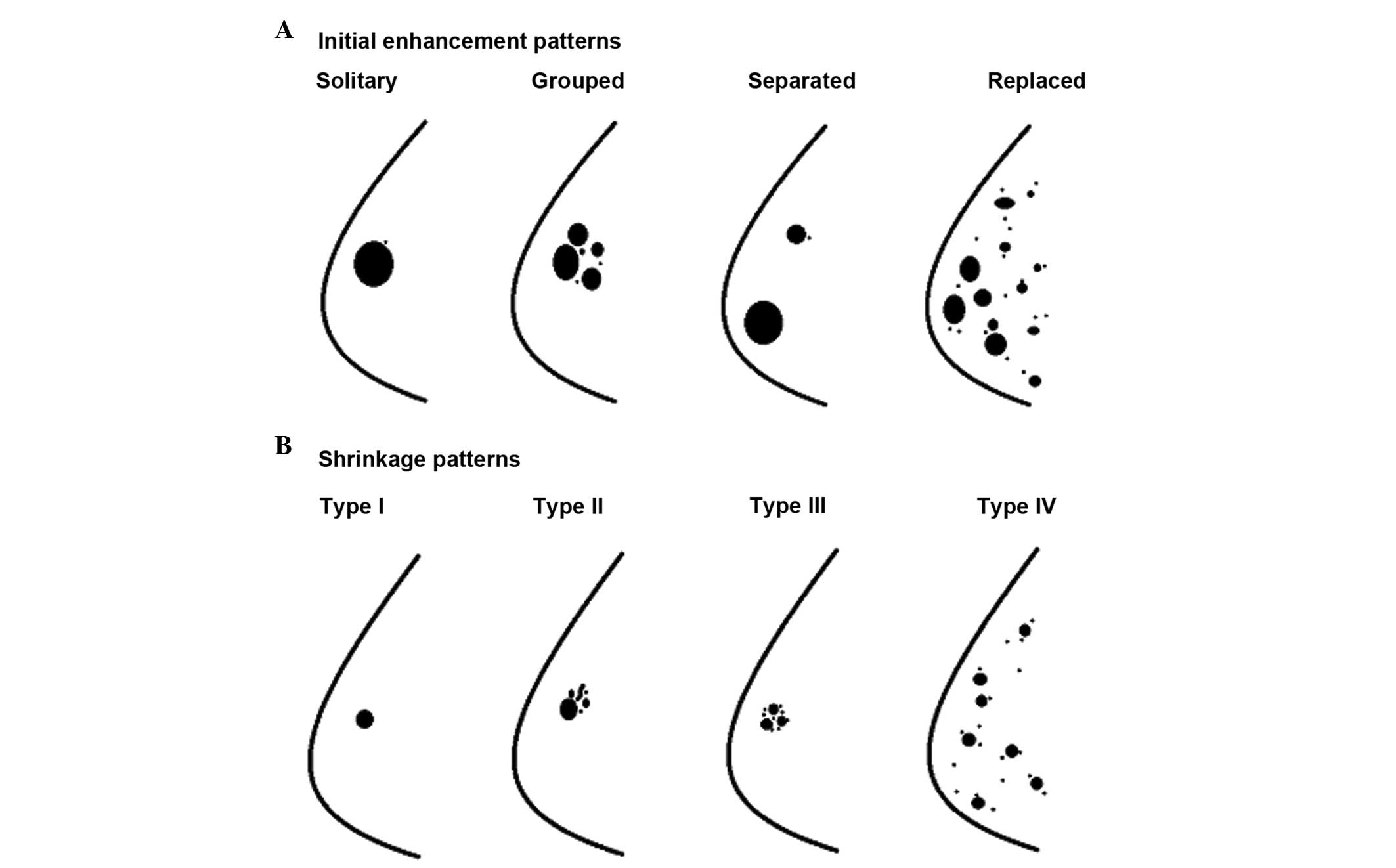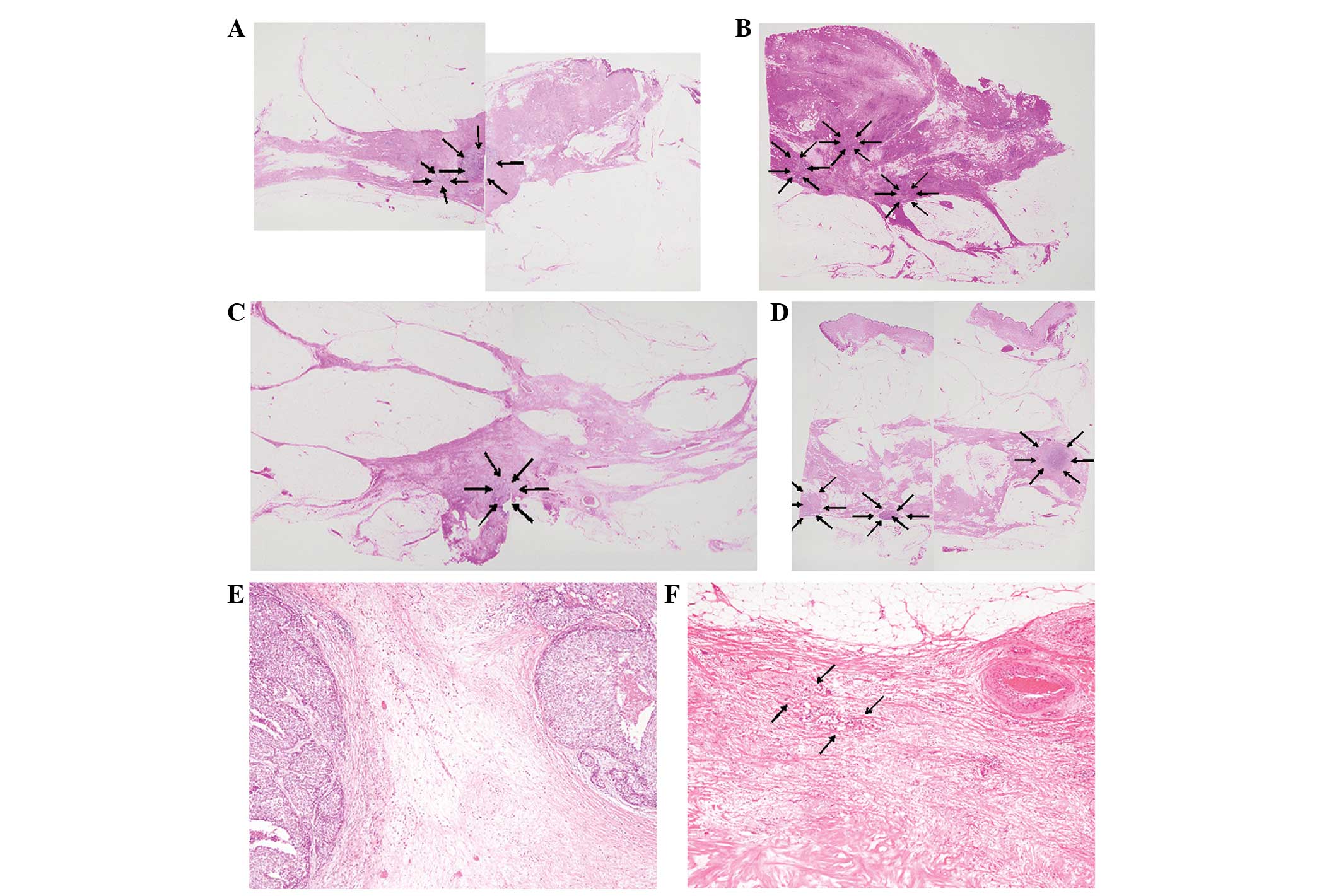Spandidos Publications style
Tomida K, Ishida M, Umeda T, Sakai S, Kawai Y, Mori T, Kubota Y, Mekata E, Naka S, Abe H, Abe H, et al: Magnetic resonance imaging shrinkage patterns following neoadjuvant chemotherapy for breast carcinomas with an emphasis on the radiopathological correlations. Mol Clin Oncol 2: 783-788, 2014.
APA
Tomida, K., Ishida, M., Umeda, T., Sakai, S., Kawai, Y., Mori, T. ... Tani, T. (2014). Magnetic resonance imaging shrinkage patterns following neoadjuvant chemotherapy for breast carcinomas with an emphasis on the radiopathological correlations. Molecular and Clinical Oncology, 2, 783-788. https://doi.org/10.3892/mco.2014.333
MLA
Tomida, K., Ishida, M., Umeda, T., Sakai, S., Kawai, Y., Mori, T., Kubota, Y., Mekata, E., Naka, S., Abe, H., Okabe, H., Tani, T."Magnetic resonance imaging shrinkage patterns following neoadjuvant chemotherapy for breast carcinomas with an emphasis on the radiopathological correlations". Molecular and Clinical Oncology 2.5 (2014): 783-788.
Chicago
Tomida, K., Ishida, M., Umeda, T., Sakai, S., Kawai, Y., Mori, T., Kubota, Y., Mekata, E., Naka, S., Abe, H., Okabe, H., Tani, T."Magnetic resonance imaging shrinkage patterns following neoadjuvant chemotherapy for breast carcinomas with an emphasis on the radiopathological correlations". Molecular and Clinical Oncology 2, no. 5 (2014): 783-788. https://doi.org/10.3892/mco.2014.333


















